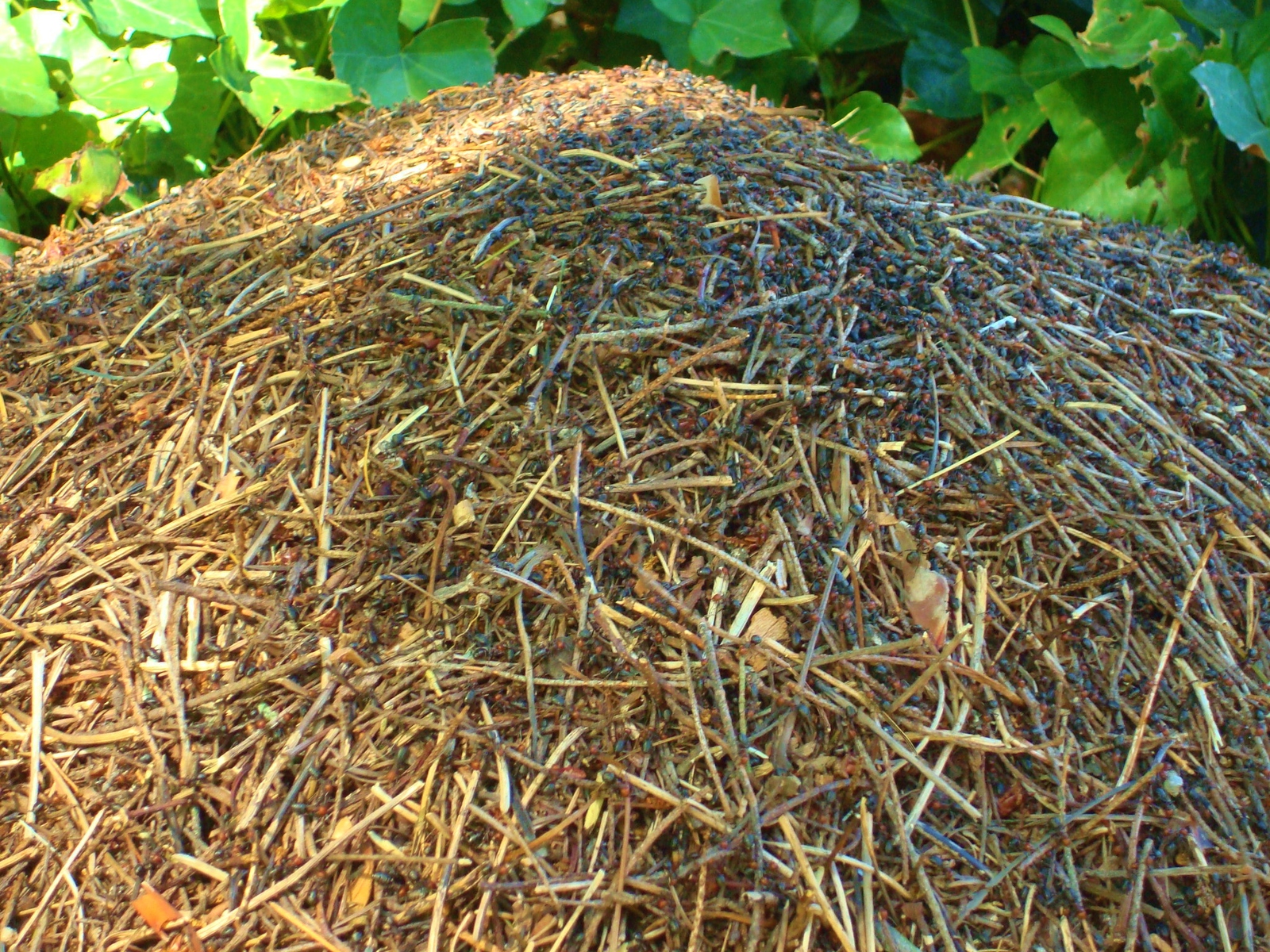Back Home by Chris Hardie
» Download this column as a Word document
» Download the photos that accompany this story
» Chris Hardie’s headshot
Growing up on the farm meant plenty of chores and hard work but there was always time for exploration. With more than 700 acres of woods and a network of spring-fed streams, there was plenty for inquisitive lads to discover.
Among the rock ledges, ravines and ridges on the farm, it was on a hillside under a dead tree where we made one of our more-fascinating discoveries. It was a large ant mound, measuring at least 3 to 4 feet across and almost as high. It was built with twigs, soil and grass.

I recall it was my brother Kevin’s best friend Jim who discovered the mound. I was probably 12 years old at the time; Kevin and Jim are three years older. But they graciously let me hang out with them.
Entomologists we were not, but subsequent research suggests the mound was built by western thatching ants or Formica obscuripes. They are more common in the drier west but are also found in Wisconsin.
All we knew was that we had never seen an ant mound that big. There were thousands if not hundreds of thousands of ants crawling all over the mound and up and down the tree. It’s likely the tree was killed by the ants, which chew the bark at the base of the tree and spray formic acid into the plant.
The size of the mound is proportionate to the age and health of the ant colony. The older and more healthy the colony, the larger the mound. The mound is believed to collect solar radiation, providing additional warmth in cooler periods and possibly helping to moderate temperatures.
Boys will be boys and we just so happened to have some explosive materials with us in the form of firecrackers. Our explorations that day included blowing stuff up. Jim stuffed a few firecrackers into the mound, lit them and scurried away. The explosions blew a few small holes into the mound and sent the ants into a frenzy. We wondered how long it would take to rebuild.
We returned the next day to find the mound completely repaired. The queen must have ordered overtime and extra staff to put things back to ant-life normal ASAP.
But we had brought some heavy artillery. Firecrackers contain about 50 milligrams of flash powder. We had a couple of M-80s. I’m not sure if it was an older M-80 that had 80 grains or 5,000 milligrams of flash powder, or the newer ones with 3,000 milligrams — but the red tube packed plenty of explosive power.
I should enter a disclaimer here that the use of M-80s has been illegal since 1966. But we were teens without advanced brain functions and clearly did not believe that ant lives matter. We simply wanted to conduct an experiment regarding the displacement power of an explosion.
Jim stuck an M-80 into the ant hill, lit the fuse and ran. Ka-boom! Dirt and debris flew into the air, some of it falling on our heads. When the dust cleared we ran to what remained of the hill — which was very little. We celebrated our battle against the ants and used the remaining M-80 to try to blow the limb off a tree before heading home for the afternoon chores.
While we may have won that battle, the ants were well-suited for war. A few weeks later we returned to the spot and were surprised to see the mound had been rebuilt. That’s because the ants have deep tunnels under the mound where reserve workers are protected. Having no more explosives and perhaps begrudgingly giving our opponent some respect, we left the ant hill unmolested.
The mound has since disappeared and I’ve never seen a large ant hill like that since. While we have countless ant hills all over the lawn and roads, those are made of dirt by field ants. The mounds come from the subterranean excavation done while digging tunnels.
There are more than 22,000 different ant species globally and 1,000 different species in the United States. The beneficial role that ants play in the environment is aerating the soil, allowing water and oxygen to reach plant roots. They also provide food for many other species.
According to Sciencing.com, connected anthills with cooperating colonies have been discovered to stretch more than 13 miles in Japan. And a colony was found to cover 3,600 miles in Europe — from the Italian Riviera to the northwest corner of Spain — where billions of Argentine ants live in millions of cooperating nests.
Now that’s what I call a successful European union. Maybe humans can learn a thing or two about cooperating from those tiny creatures.
Chris Hardie spent more than 30 years as a reporter, editor



